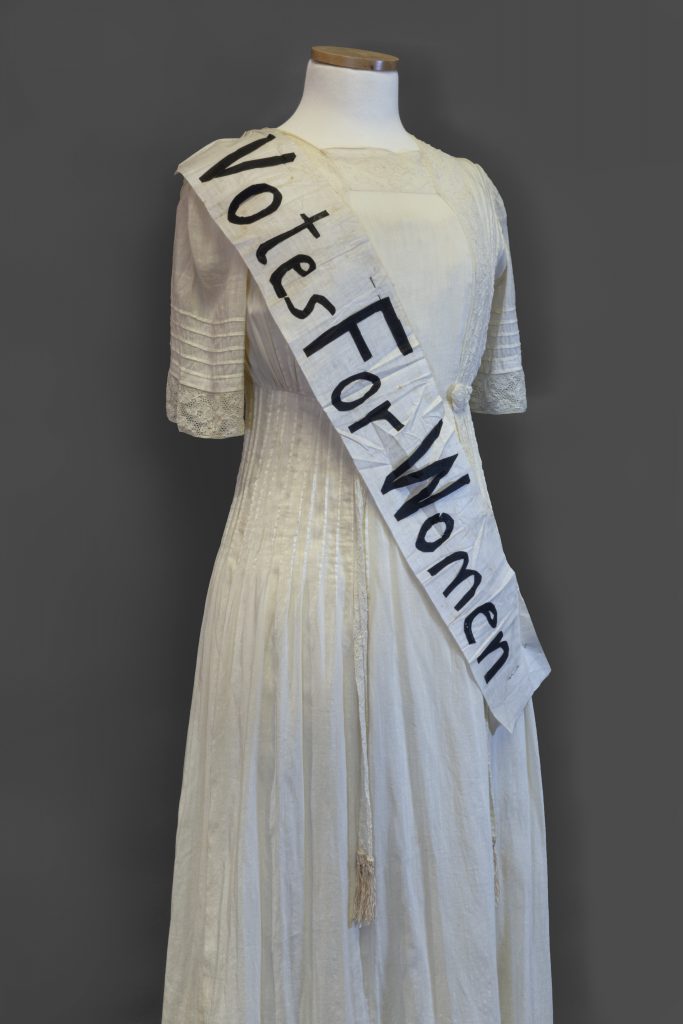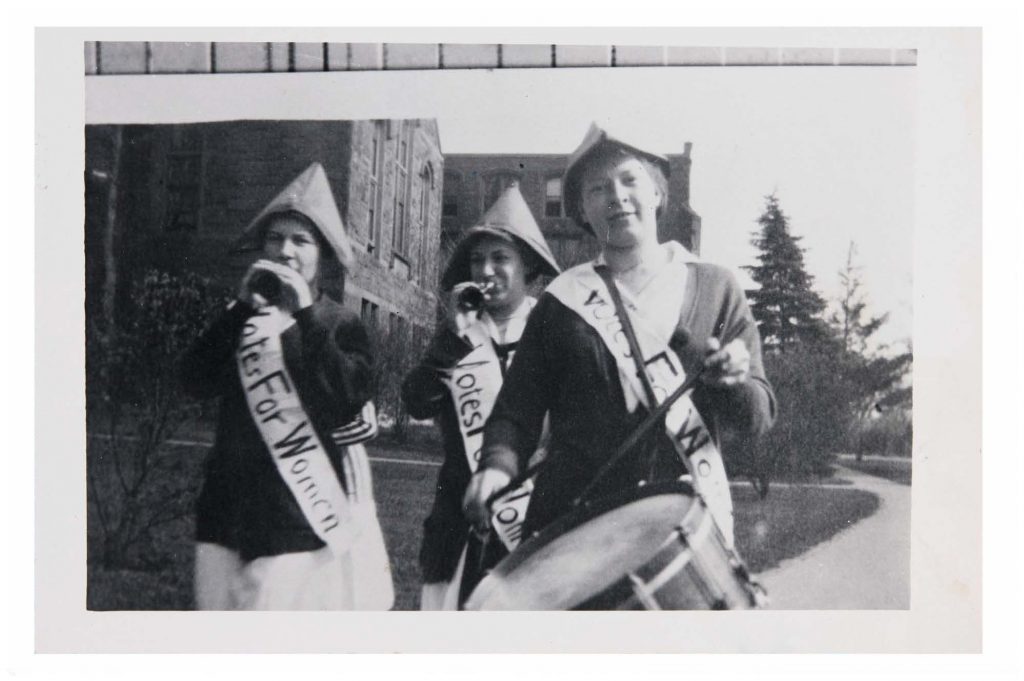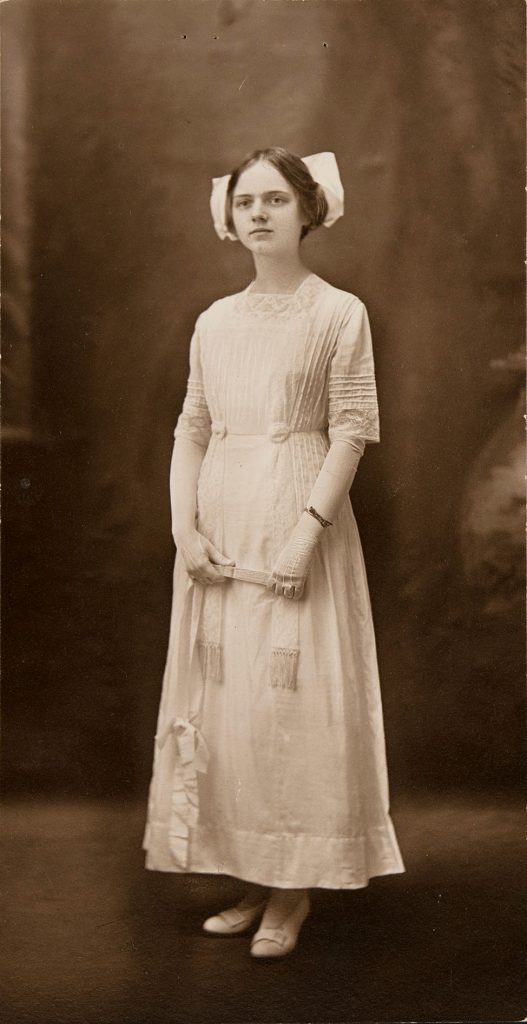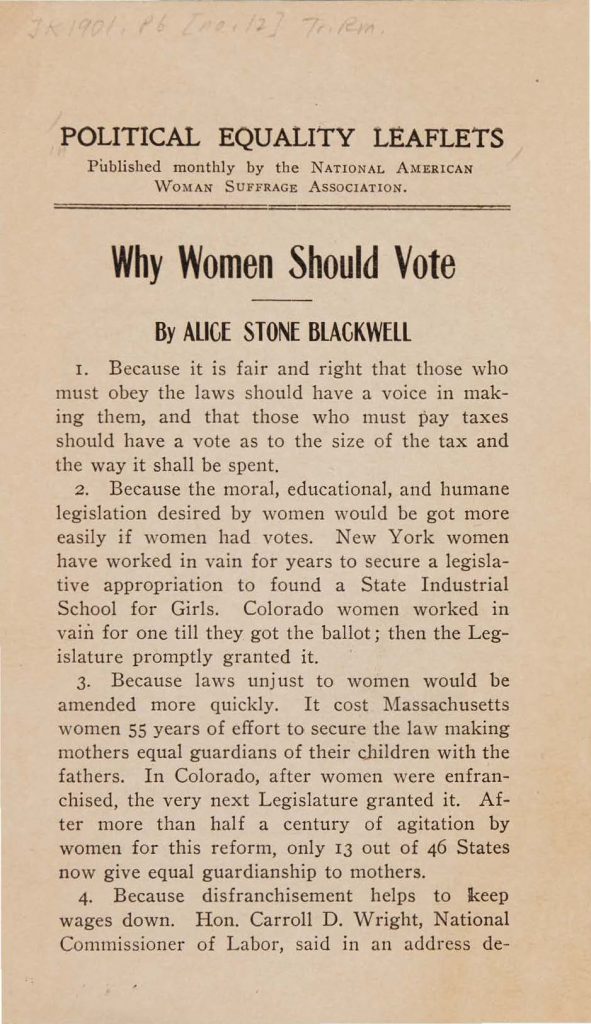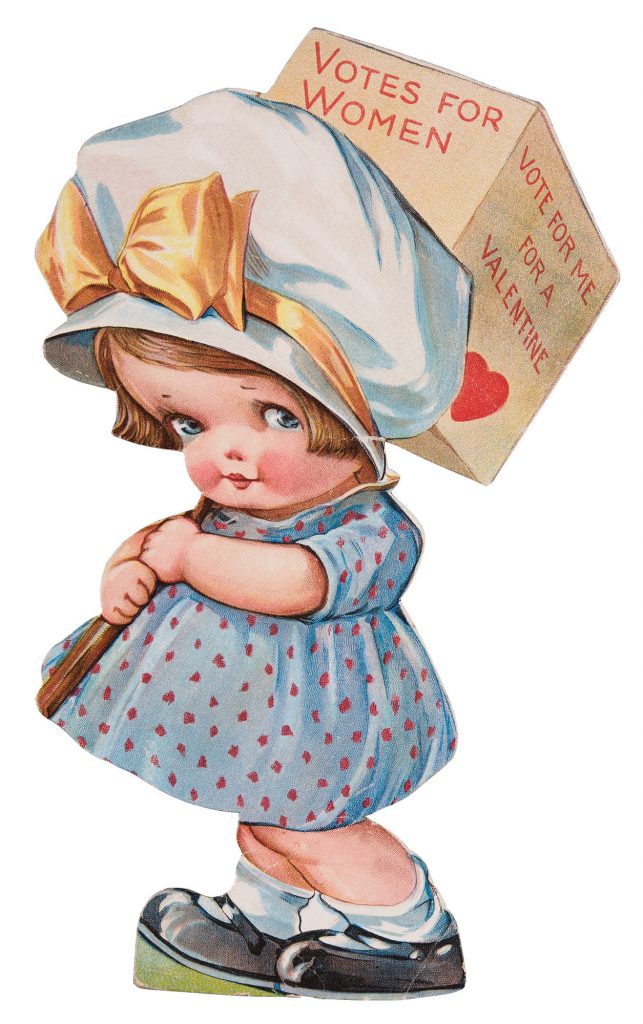Florence Tuttle’s Sash and Louise Dunbar’s Dress
Handmade Votes for Women Sash, 1916
This sash belonged to Florence Tuttle, Class of 1916, an active member of the National College Equal Suffrage League serving in multiple leadership roles. She and two classmates handcrafted their sashes for Suffrage Day and marched in a band. Florence (left in band photo) and her sash are clearly visible because of the unique hand-cut letters.
Dress of Louise Dunbar, Class of 1916, ca. 1912
This cotton batiste dress belonged to Louise Dunbar, President of the Equal Suffrage League. It was likely worn for a high school graduation before her time at Mount Holyoke, though it would have been similar to dresses she wore for special occasions at college.
Florence Tuttle wearing her sash, ca. 1916
Three students wear triangular paper hats, sweaters over white dresses, and “Votes For Women” sashes pinned across their chests. Florence Tuttle stands at the left playing the bugle.
Louise Dunbar wearing her dress, 1912
Louise Dunbar wearing the dress circa. 1912. The dress is evidently the same as the one on the mannequin, albeit in better condition.
Why Women Should Vote, Alice Stone Blackwell, 1904
Alice Stone Blackwell was a prominent feminist, suffragist, and journalist during her lifetime. In this pamphlet published by the National American Woman Suffrage Association, Blackwell outlines 16 reasons why women should be granted the right to vote. Many of her arguments focus on how women’s suffrage would improve women’s lives as well as other areas of society.
Pro-Suffrage Flyers, 1906
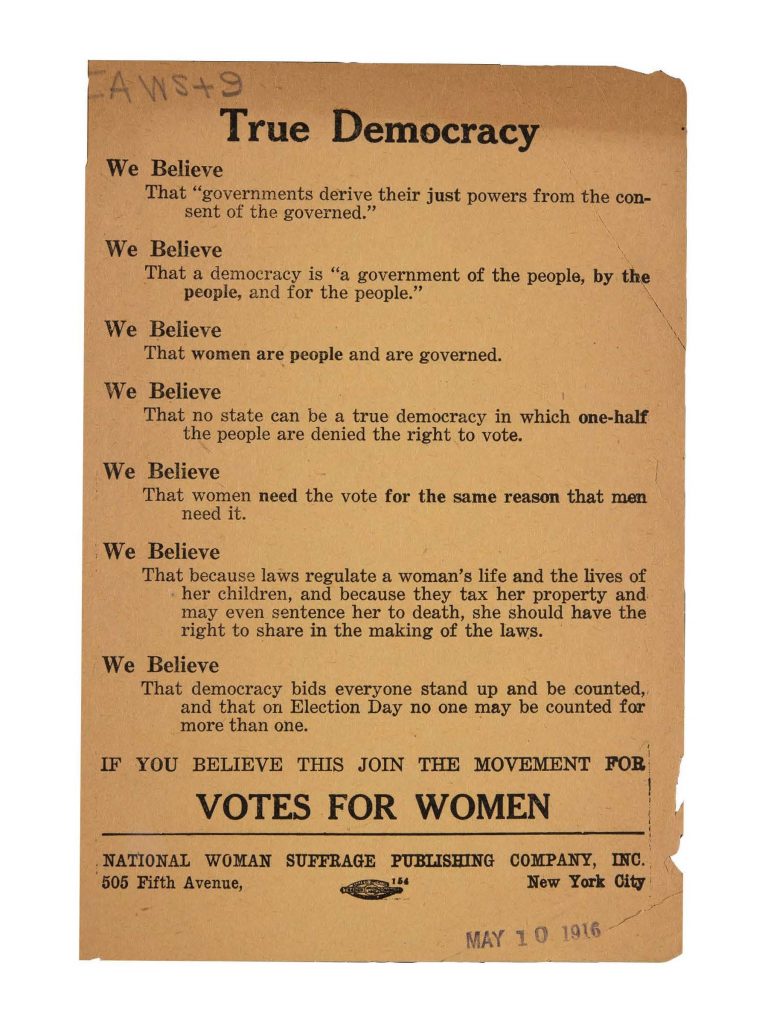
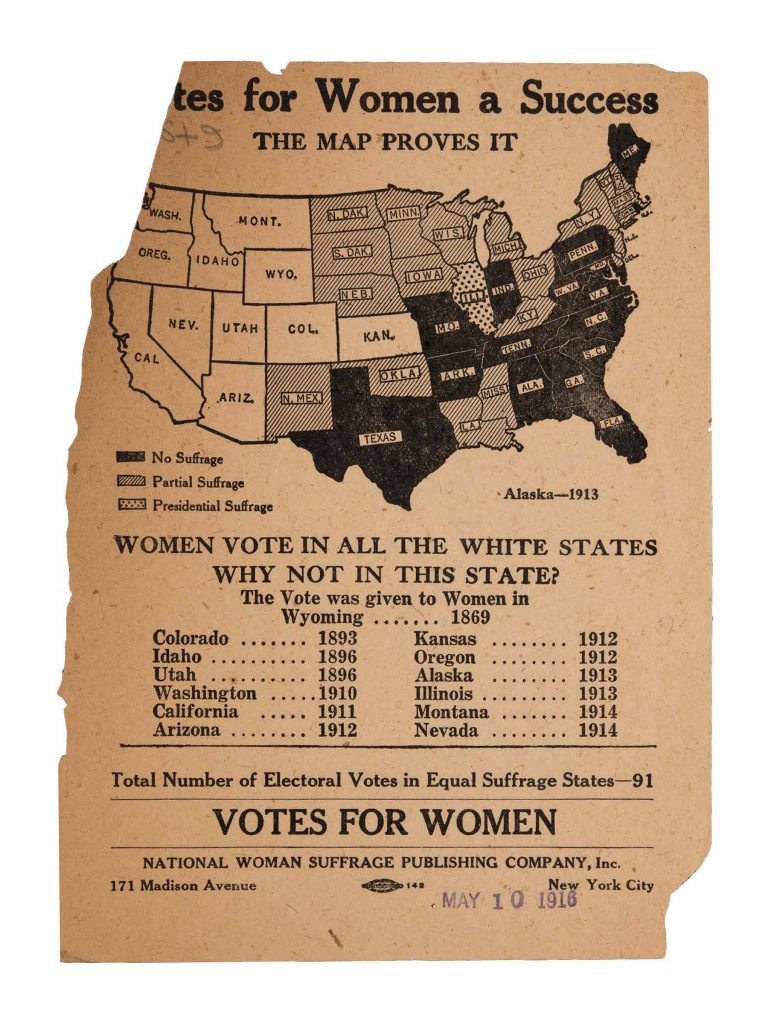
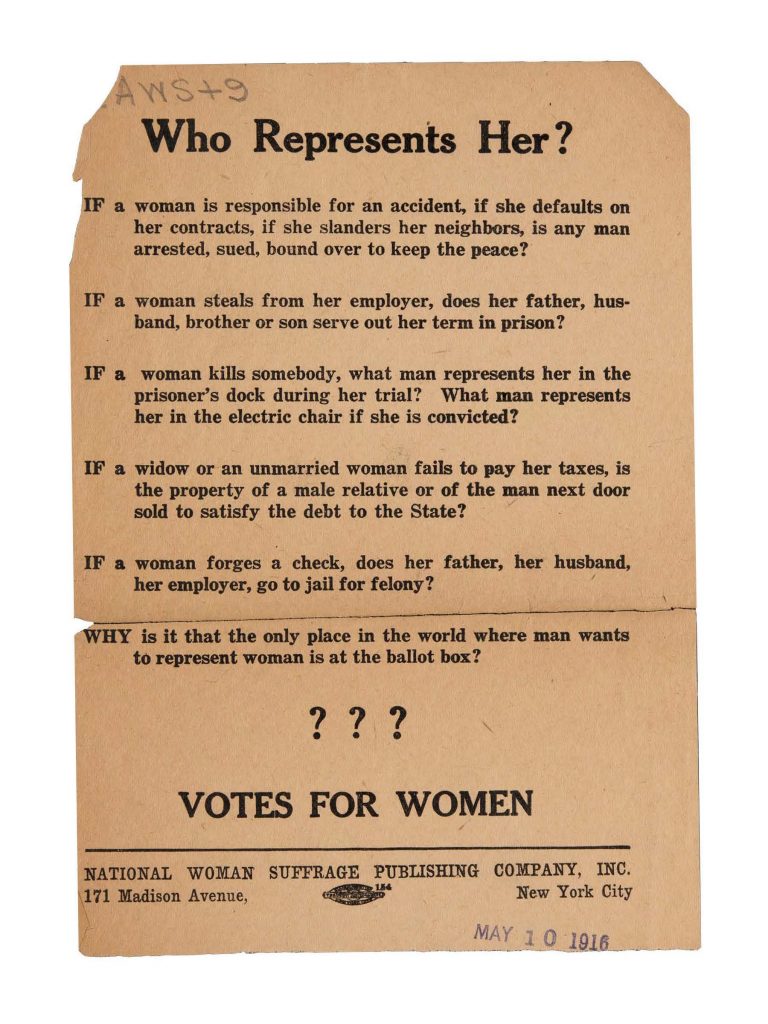
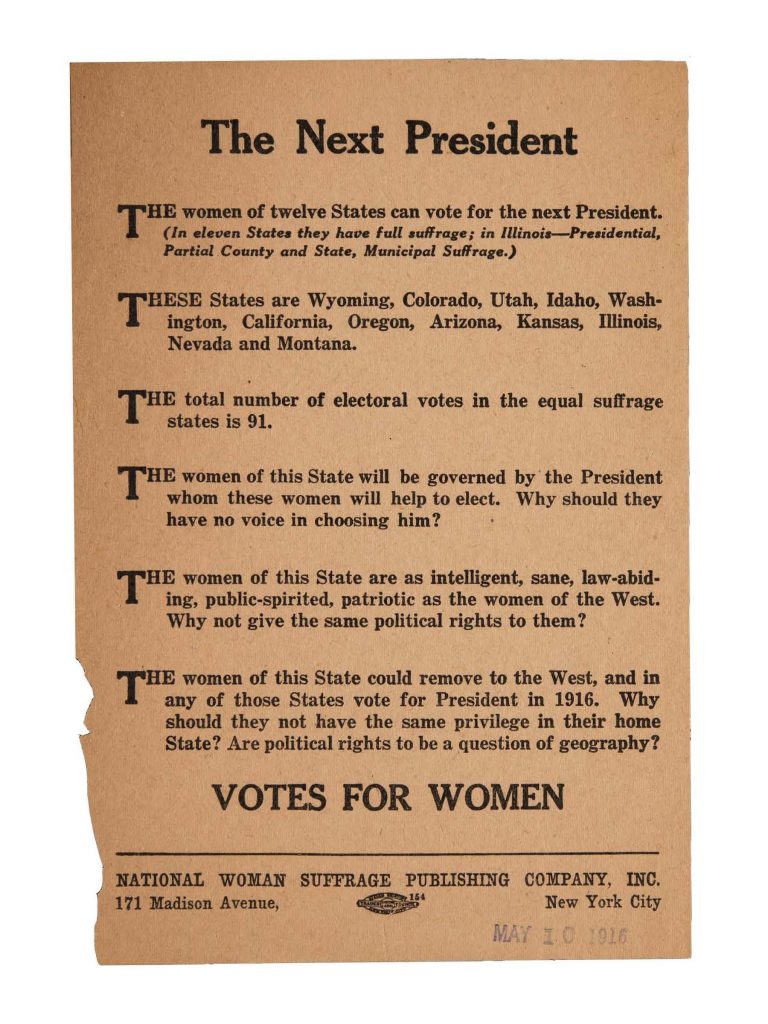
Distributed by the National American Woman Suffrage Association in 1916, these flyers, originally sized 5” x 7”, were created to spread awareness for the cause in a convenient handheld size. They contained information about the main tenets of the suffrage movement, the states in which women had full or partial suffrage, and rebuttals against anti-suffrage arguments.
Votes for Women Valentine, 1916
Suffragists used valentines and other holidays to spread their message to as many men as they could, since men would ultimately be the ones to write and pass a voting rights amendment. February 14th would later become a significant day for suffragists because the League of Women Voters was founded on that day in 1920.
Students Dressed as Political Candidates, ca. 1916
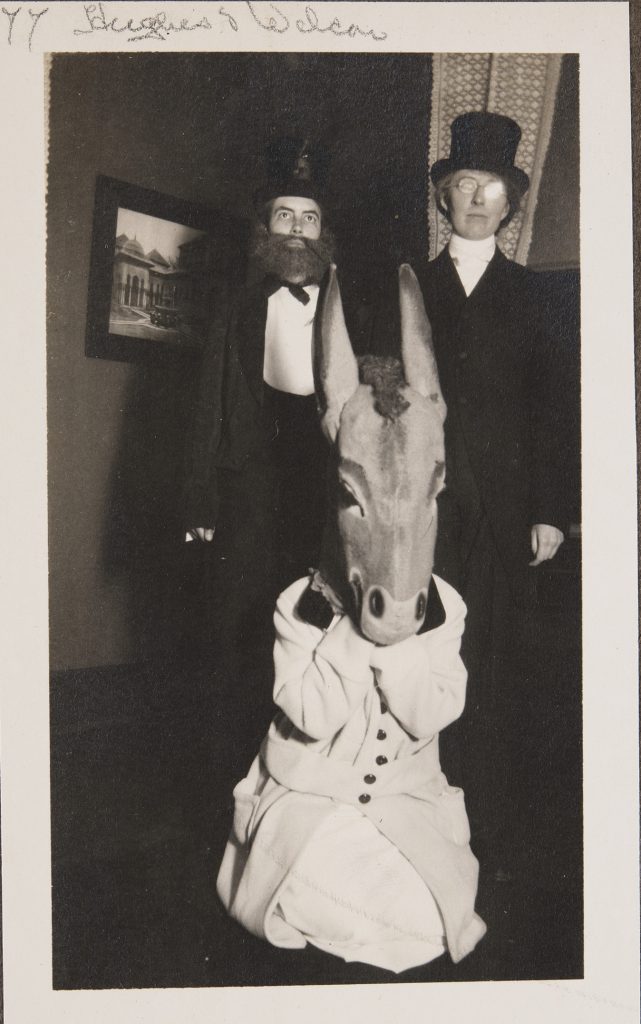
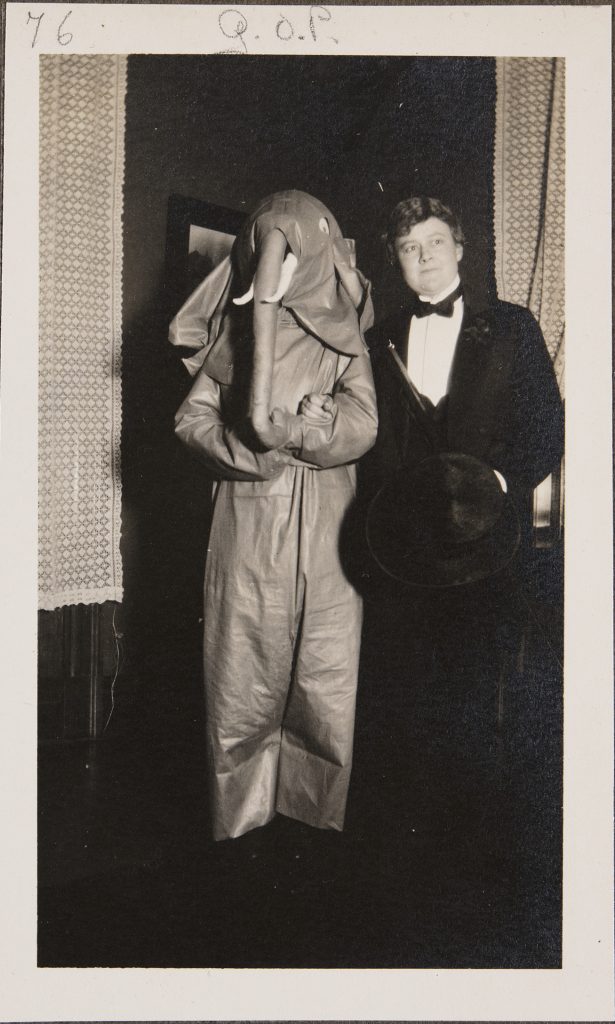
Before 1920, Mount Holyoke students held mock campaigns and elections in which they dressed up as the presidential candidates of that election year. These photos show students dressed as various figures from the 1916 national election including Woodrow Wilson and Charles Evans Hughes, as well as a donkey and an elephant to represent the Democrat and Republican parties.
